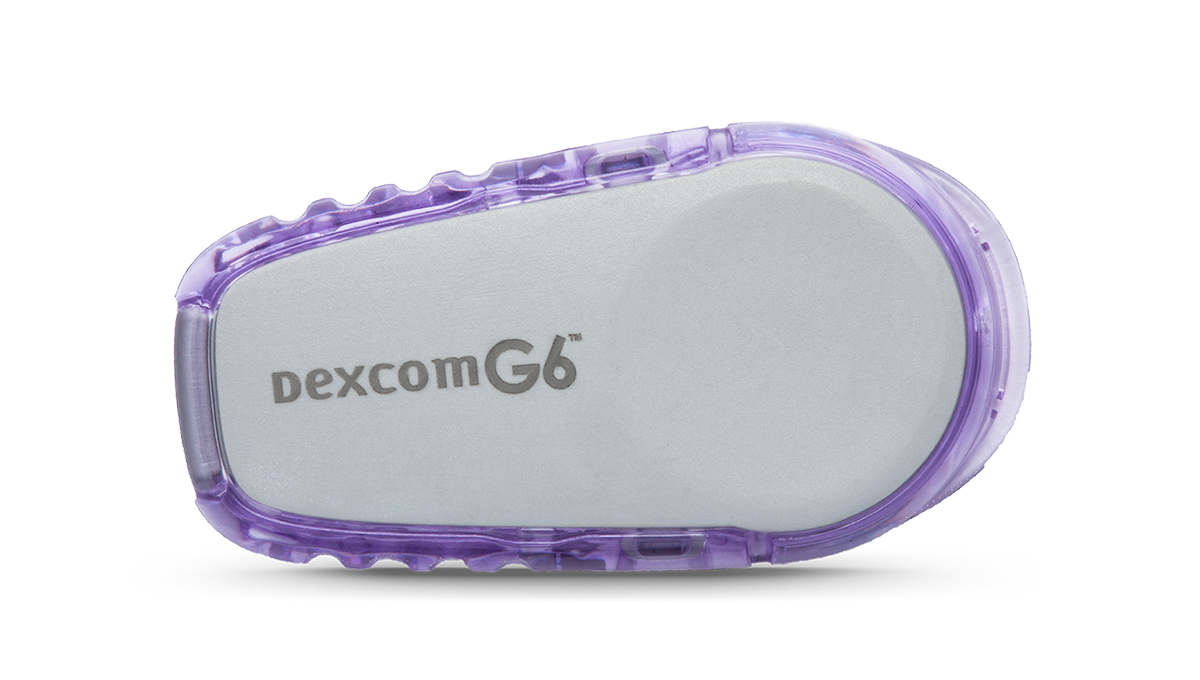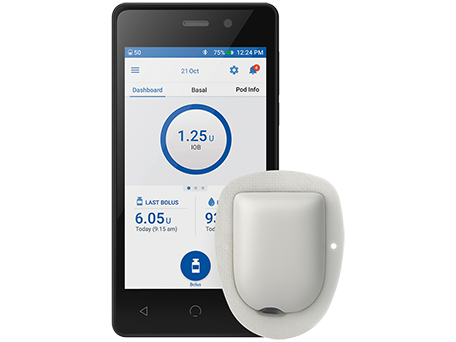Continuous Glucose Monitoring 101
You may have heard of ‘continuous glucose monitors’ (CGM), but what do these devices actually do? How can they help people living with type 1 diabetes? And how do they work with Omnipod® Pod Therapy? Let’s find out!
What is a Continuous Glucose Monitor (CGM)?
Continuous glucose monitors allow users to check their glucose levels without having to use finger pricks.
Each device uses a sensor- a small, wireless device that you wear on your body- that reads your glucose levels via the fluid under your skin called “interstitial fluid”. This is slightly different from the blood glucose reading taken with finger prick testing as it lags behind blood sugar levels by up to 15 minutes.
You may still need to occasionally finger prick, for example, if what you’re feeling doesn’t match what your reading says or if you want to double check before treating a high or low sensor reading. This is why it’s important that you still get your diabetes kit on prescription including your blood glucose meter to let you do finger prick checks1.
How does a CGM help with type 1 diabetes management?
Continuous glucose monitors take a sensor glucose reading from the interstitial fluid, just below the skin, and allow the user to see this information on a smartphone or other device.
They also offer the ability to see if glucose levels are high or low, rising, falling, or stable. You may hear this referred to as a “trend” and users can take action earlier if they notice glucose levels beginning to rise or drop. CGM graphs can help build a better understanding of a person’s glucose trends and what affects glucose levels.
With a CGM there is a function to set alarms and alerts for when your glucose levels get too high or too low.


How does a CGM help with
type 1 diabetes management?
The glucose information and trends give someone living with diabetes a greater picture of what their glucose levels are doing at any given time of the day. This information can be used to help inform treatment decisions - for example around when waking, eating, or during exercise.
Some CGMs will also alert you when your glucose is running high or low, or even predict hypoglycaemia in advance. This feature can help give greater peace of mind when it comes to hypoglycaemia or hyperglycaemia.
Research suggests that continuous glucose monitoring can help people with type 1 diabetes improve their time in range, as well as reducing their HbA1c without increasing the risk of hypoglycaemia.2, 3
Can I use a CGM alongside a Pump?
The short answer is yes.
For example, any continuous glucose monitor can be used alongside your Omnipod DASH® System to monitor your glucose levels. The user will manually input these readings into the Personal Diabetes Manager (PDM) for a meal or correction bolus.


Frequently Asked Questions about CGMs
How does a continuous glucose monitor differ from finger prick testing?
How often do you have to change a CGM sensor?
Where can I wear a CGM?
Can I share my Glucose data with Friends and Family?
References and disclaimers:
2 Beck RW, Riddlesworth T, Ruedy K, Ahmann A, Bergenstal R, Haller S, Kollman C, Kruger D, McGill JB, Polonsky W, Toschi E, Wolpert H, Price D; DIAMOND Study Group. Effect of Continuous Glucose Monitoring on Glycemic Control in Adults With Type 1 Diabetes Using Insulin Injections: The DIAMOND Randomized Clinical Trial. JAMA. 2017 Jan 24;317(4):371-378. doi: 10.1001/jama.2016.19975. PMID: 28118453.
3 Welsh JB, Gao P, Derdzinski M, Puhr S, Johnson TK, Walker TC, Graham C. Accuracy, Utilization, and Effectiveness Comparisons of Different Continuous Glucose Monitoring Systems. Diabetes Technol Ther. 2019 Mar;21(3):128-132. doi: 10.1089/dia.2018.0374. Epub 2019 Jan 25. PMID: 30681379; PMCID: PMC6434583.
4 Dexcom UK (2024) Why CGM, Dexcom.com/en-uk. Available at: https://www.dexcom.com/en-GB/uk-why-cgm (Accessed: 13 March 2024).
5 Dexcom UK (2024a) Where can I insert my G6 sensor?, Dexcom. Available at: https://www.dexcom.com/en-au/faqs/where-can-i-insert-my-g6-sensor (Accessed: 13 March 2024).
6 Abbott Diabetes Care Australia (2022) Sensor Adhesion Guide. Available at: https://image.email.freestylelibre.com.au/lib/fe9715737661007971/m/2/5c3dc4cc-dabb-432f-a598-1b10fe6f8ee5.pdf (Accessed: 16 April 2024).